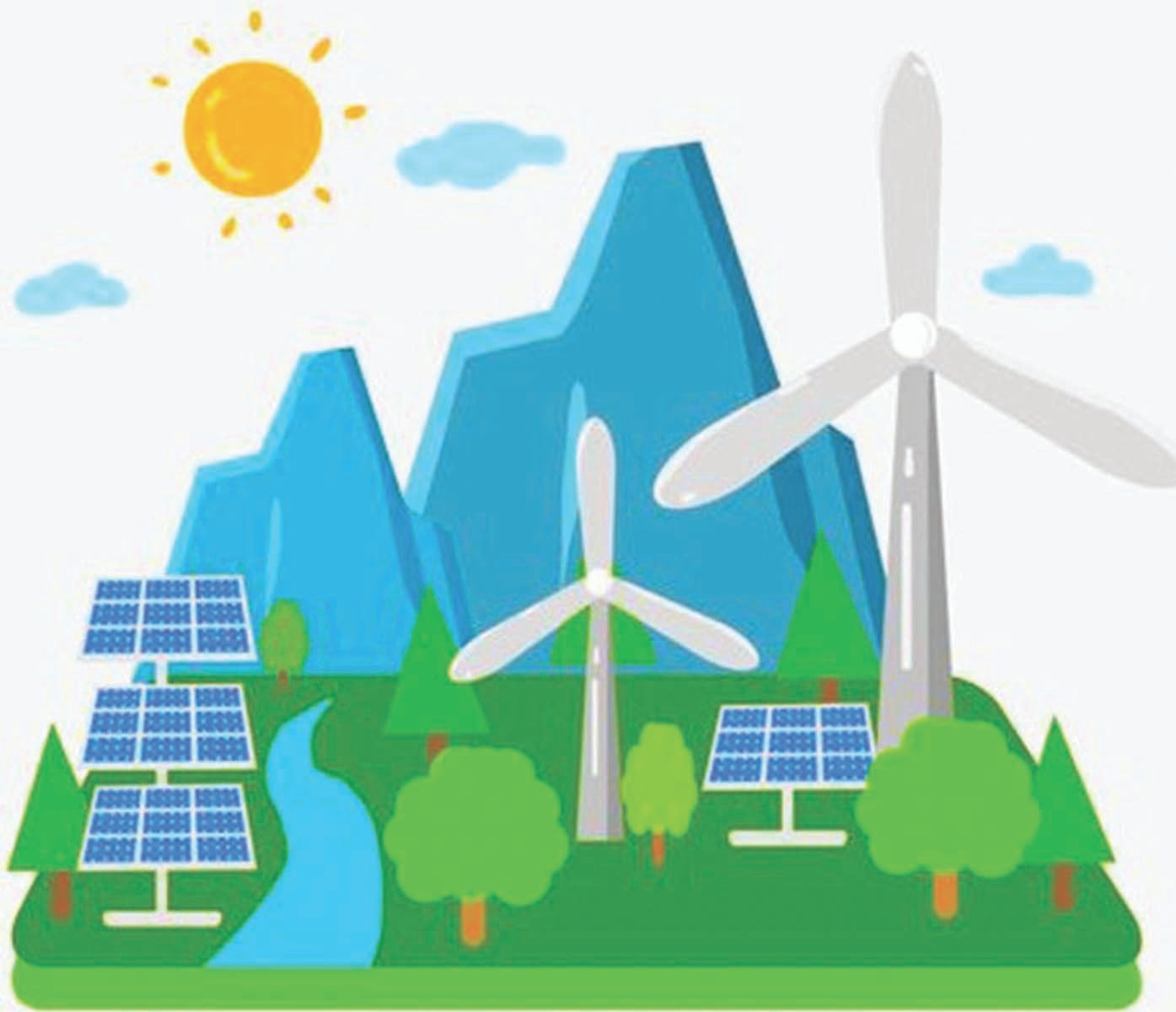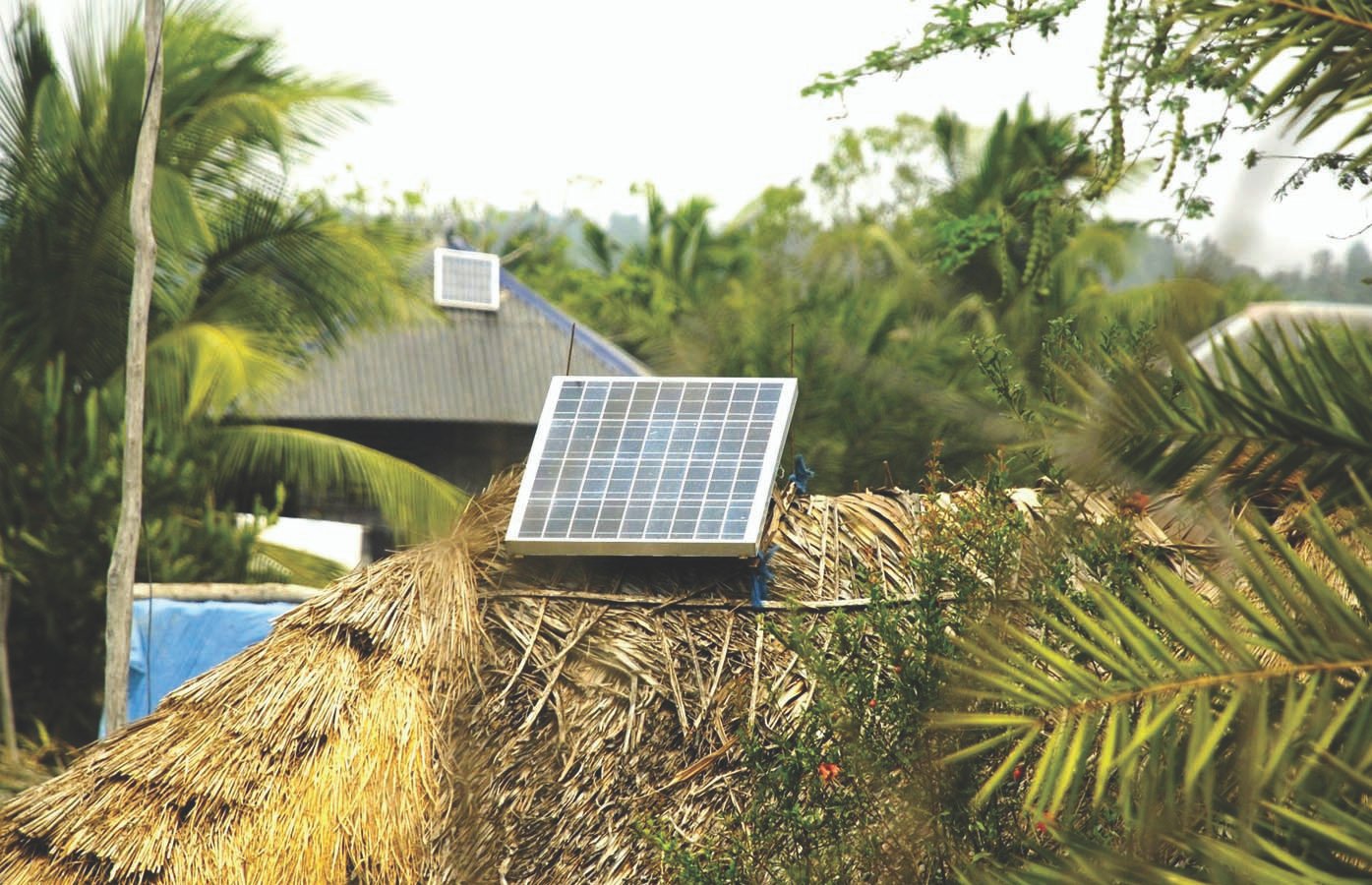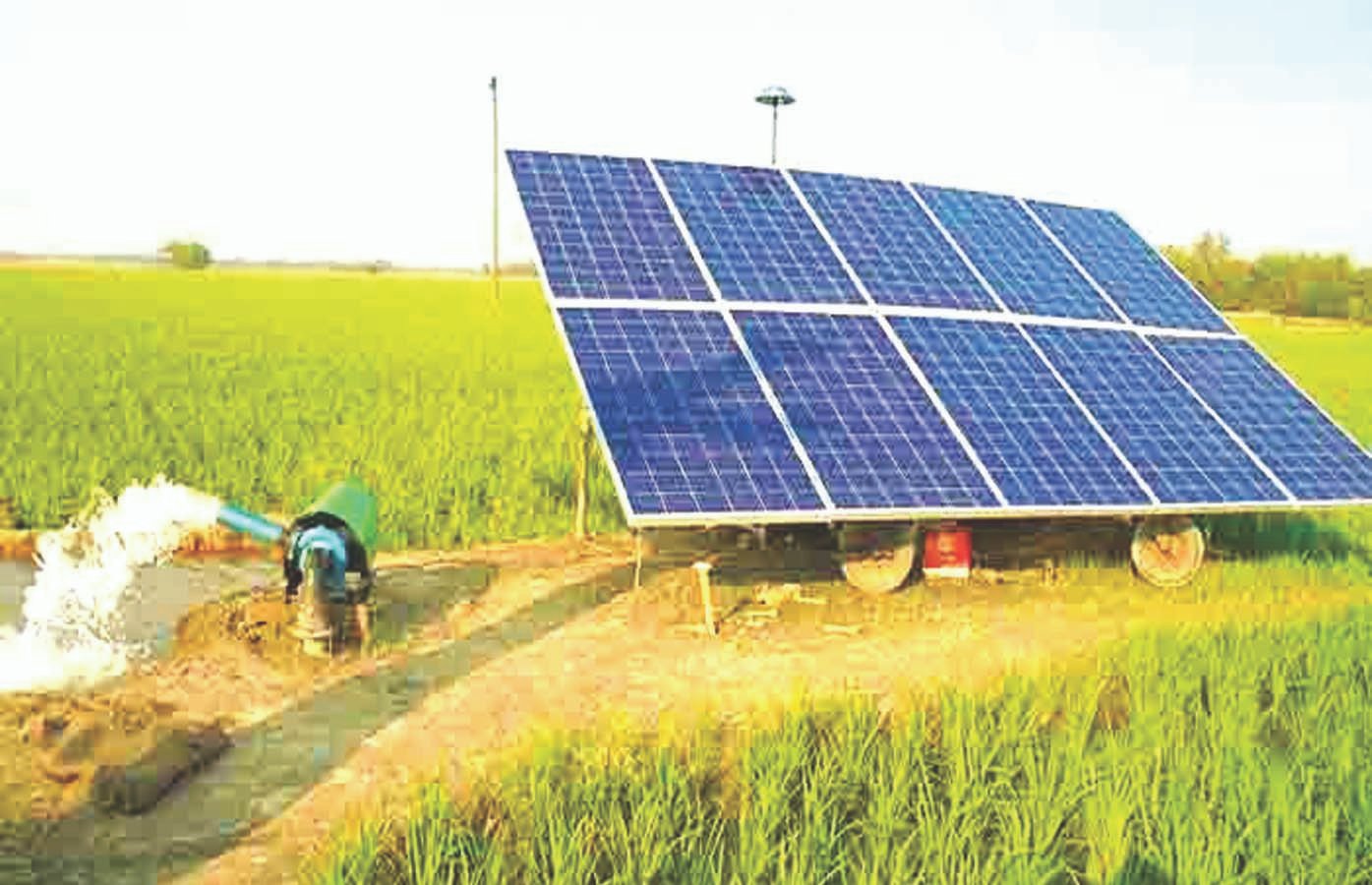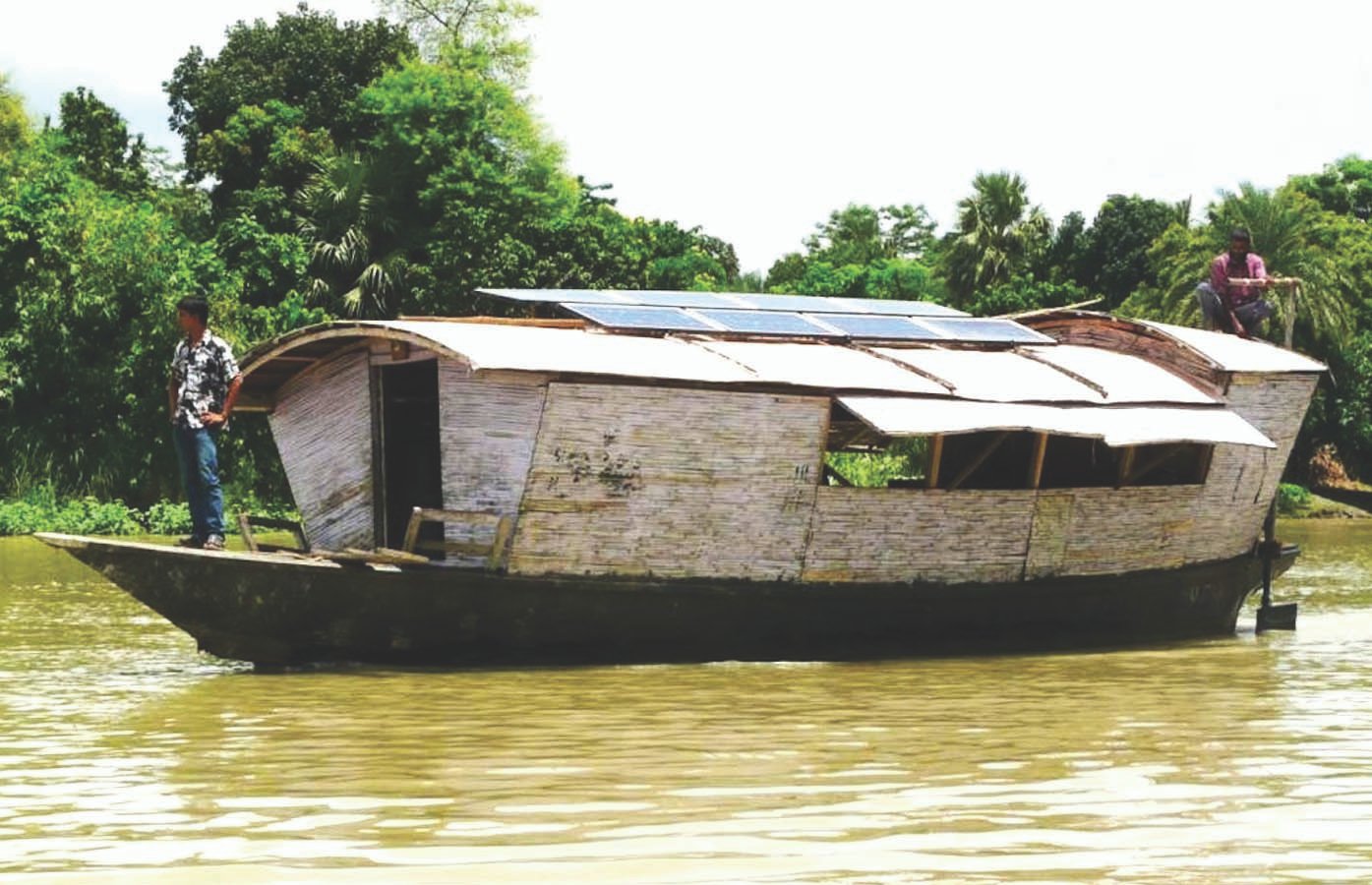
The power sector in Bangladesh presently aims to build a sound, efficient, least-cost generation system with an increased share of renewable energy, giving priority to efficiency development and balancing energy transition. Transitioning the power sector towards renewables would gain several benefits for the country, its economy and society. The government is implementing a number of large-size power plants that include coal, which is cheaper than High-Speed Diesel and Furnace Oil. There are also a number of public and private rental plants using HSD and HFO with high-cost fuels and a number of less-efficient small-scale IPPs to be replaced by efficient and least-cost fuel.
The grid-based power generation capacity increased rapidly from 5,493MW to 23,482MW (including renewables) over the last 14 years (from 2009 to January 2023). The government has set a target to achieve the capacity of power at 26,000MW by 2023, 29,000MW by 2024, 40,000MW by 2030, 60,000MW by 2041, and 90,000MW by 2050, where up to 40% would come from renewable energy sources.

Power generation programs with some new plants are to be completed by the 8th five-year plan (2025). In order to meet future demand, 44 new plants are at the construction stages with a capacity of 15,924MW (16 plants are public-sector with 9,065MW, and 28 plants are private-sector with 6,859MW), and will go for generation by 2024. A revised "Power Generation Plan 2030" has been prepared for 2020-2030 considering PSMP-2016.
Bangladesh government is preparing (final draft) a new Integrated Energy and Power Master Plan (IEPMP), giving emphasis on Renewable Energy in order to achieve Clean Energy targets to generate 90GW by 2050. The earlier declaration of commitment to generate “40% power from Renewable Energy (RE)” has been shifted to “up to 40% from cleaner energy”. The plan is technically supported by the Japan International Cooperation Agency (JICA) as they assisted earlier plans (PSMP 2005, 2010, and 2016).
Energy Mix for Power Generation
The power sector in Bangladesh is dependent on fossil fuels and will hold about 92% share in the total energy mix (2022), whereas the global share is 61% came from fossil fuels, contrasting the renewables are rising worldwide. Solar and hydropower account for below 3% in the energy mix. This share is the lowest in South Asia, far behind India (23%) and Pakistan (43%). Bangladesh generated electricity 52% from natural gas, furnace oil 27%, coal 8%, diesel 6%, hydro 1%, and renewables 2%. The high cost of imported fossil fuels creates economic hardships for the country.

According to the 8th five-year plan (2020-2025), the energy will be used by a diversified fuel mix, while there are a number of gas and coal-based power plants both in the public and private sectors. Gas continues to be the largest fuel source, with imported LNG being added to the system enlarging gas-based power generation. Bangladesh is now given more emphasis to increase renewables shares, with its high potential in the power sector.
According to the IEEFA report, Bangladesh can incorporate the power sector with 1.7 to 3.4GW of solar power during day time and can use up to 4GW of wind power at night time. According to the NREL report, there is over 20,000 sq km of land where wind speeds range between 5.75 and 7.75 m/s, with a potential of over 30,000MW wind power. Furthermore, utilizing 4% of available land space would support enough capacity for a big share (more than 40%) of renewable power. The country has also a higher potential in hydropower with over 50% of its capacity remaining untapped now (IEEFA).
A major addition to the power sector is nuclear power generation, expected to start by the end of 2025. The Rooppur NPP is one of the top priority projects of the government, the First Concrete Pouring of Unit 1 and Unit 2 have been completed, while Unit 1 to generate 1200MW and Unit 2 another 1200 MW power, adding a total of 2400 MW of nuclear power by 2024.
Renewables - The Pathway to Sustainable Power
A clean energy transition is vital for Bangladesh to address some critical issues, e.g. rising power costs, fuel import dependency and fuel subsidy burden. Bangladesh National Solar Energy Action Plan (2020) was introduced to shift its renewable policy to clean energy potential. This aims for up to 40GW (40%) to be installed by 2041.
The government also plans to import 9GW under regional and sub-regional cooperation. Bangladesh needs to address the challenges like land constraints, financing, regulatory and policy barriers, slowing of energy reform, and implementing process activities for renewables target by 2041. The transition towards renewables will further accelerate the country’s economic development, keep energy access reliable, and affordable, and improve healthcare with quality of life, which is termed as a pathway to a sustainable future.

Policy Support for Renewables
The government has undertaken different policies and regulatory actions to facilitate environment-friendly power from RE, formulated RE Policy 2008 (under review), and established the ‘Sustainable and Renewable Energy Development Authority (SREDA)’ in 2014. SREDA is facilitating private and public investments in RE, and has undertaken several projects (e.g. Solar Park, Solar Irrigation, Solar Mini-grid/micro-grid, and Solar Rooftop), and social projects e.g. Rural health centers, Remote educational institutes, Off-grid Railway Stations, and Government, Semi-Government Offices in the off-grid areas.
Power Sector Development Strategies
The government has given emphasis on energy conservation by working on both supply and demand sides. A well-articulated DSM policy can be a cost-effective way of curtailing peak demand, and effectively controlling loadshedding. The government has undertaken several strategies for power sector development: (i) to move an efficient least-cost power production based on (a) primary fuel mix, including efforts to increase domestic coal and gas mining exploration; (b) to reduce system losses from 9.35 % to below 7.5 % by 2025; and (c) maximizing the use of RE and energy trade; (ii) to ensure supply of unhindered quality and uninterrupted power with 100% population connected; (iii) to undertake reforms with the participation of private sector; (iv) to address poor power plants for replacement or improve efficiency; and (v) establishment of energy hubs in the country.

Fossil Fuel- the Key Factor for Climate Changes
Most fossil fuels are the key factors for higher carbon emissions and are responsible for the climate changes, that make the world warming and vulnerable to natural disasters. The Global Climate Risk Index ranks Bangladesh as the 7th extreme disaster risk-prone country globally, and top 10 in terms of climate-induced losses.
In 2022, the country suffered the most devastating floods, affecting 7.2 million people. Bangladesh is now facing (2023) with the worst heat waves compared to the past 30 years. The IPCC warns that climate change may cost Bangladesh 2-9% of its GDP and predicts that 4 million people will lose their homes, and 25% of the country’s population will live with water scarcity by 2050.
IEPMP
Bangladesh is preparing now a new integrated power plan (IEPMP), which aims to set a long-term energy plan covering all sectors considering the present energy situation, its demand, and the global focus toward low-carbonization. The plan applied to (a) uses of bottom-up sectoral approach and a wide range of variables; and (b) takes scenarios on reference, advanced technology, and Net Zero by 2050.
The plan is expected to be introduced in November 2023, while at present the power sector is under pressure with a short to medium-term crisis. The plan includes a target of 40% renewable energy usage by 2041. In an analytical sense, the plan is critical to explore to understand how it will achieve the clean energy targets during the present challenges and strategies and to be adopted for the energy and power sector.
The plan also considers the scenarios on economic growth by 2050: (a) GDP growth projection based on IMF long-term projection (IMF ext.); (b) GDP growth projection based on the perspective plan (PP-2041); and (c) GDP growth projection in between IMF ext. and (PP-2041). The plan is still ambiguous for the generation of 40% renewable energy while continuing to provide fossil fuel-based power generation as a major source of power up to 2030.
IEPMP – Needs Review
The new IEPMP seems to be put in a complex methodology in order to understand the energy demand, energy mix, and energy efficiency which need to be briefly discussed. There should be a roadmap regarding how the fuel mix can be gradually transferred from coal to renewable energy.
Large-scale investment is required to explore alternative power sources from Ammonia and Green-Hydrogen which have a big potential in the country. Government should look for foreign partners and investors in the RE sector. The plan should be considered a carbon-neutral economic perspective and reflected in the operational actions.
The plan to fix up the power demand scenario in 2050 roughly 90GW, which is highly ambitious, and attain in-brief with its achievement from RE (clean energy) sources to make the target of 40% realistic. A clean energy scenario in the power and energy sector can be resource-efficient, generate additional power, and save subsidy allocation by phasing out.
The Cogeneration mechanism like combined heat and power (CHP) an advanced technology (where energy efficiency is more than 80%) has not been considered in the integrated plan which is a vital source of clean energy. Therefore, it needs to focus on the CHP to produce additional power from exhaust steam/waste heat, to achieve the 40% target from the clean energy sources.
So before finalizing the IEPMP, those issues as well as the stakeholders’ concerns must be addressed.
The Way Forward
Renewable energy technologies are capital-intensive while producing 40% out of 60,000MW from renewables by 2041, Bangladesh needs to mobilize finance accordingly from various sources - an estimated annual investment from US$1.53 billion to US$1.71 billion would be required until 2041 based on solar and wind technologies. Also, needs to be modernized the old grid system to improve the quality of the power supply mechanism.
The power demand falls in the winter and rainy days with great relief in energy pressure, while power demand increases from March and continues up to August. The impact of abnormal climate change behavior, Bangladesh may face this extreme weather phenomenon with strategic loadshedding up to targeted power generation.
The costly electricity generation and subsidy burden are tempting factors for Bangladesh to reinforce renewables capacity, applying risk-guarantee funds, green bonds, etc., will help provide traction for renewable energy in the country. The power finance facilities, the funding channels of multilateral development agencies, global partners, and private equity, and infrastructure funds could help the power sector development in Bangladesh.
The private sector has an important role in the energy transition and power sector development, while support can be taken from the prominent private sector partners, and international agencies to expedite the power targets by 2041.
Conclusions
The achievement of sustainable power sector development, needed to focus on the quality and efficient power generation system with supply and demand-side management. There are some challenges to be addressed to implement the development strategies, mainly from energy mix to transitional shift towards renewables and to focus on the growing demand for primary fuel to meet in the next 20 years for a potential future.
In order to minimize environmental impact and reduce carbon emissions, coal-based power plants can be used with advanced technology, considering the reduction of GHG emissions, as Bangladesh has a strong commitment to nationally determined contribution (NDC) to the Paris Agreement on climate change.
The IEPMP and renewable energy policy will provide big opportunities for re-designing the energy transition pathways to clean energy with a contribution to emission reduction and ensuring energy security in Bangladesh. The new IEPMP (2023-2050) will be a backbone, and policy guideline to ensure energy security in Bangladesh by 2050. to achieve its long-term targets and fulfill the country’s power demand of 90GW by 2050.
Click Here to Download Cover Xtra as PDF/userfiles/Cover_Xtra_20_24_Bangladesh Energy Transition Towards a Sustainable Future-2050_AKM Monowar Hossain Akhand.pdf
AKM Monowar Hossain Akhand, Former Additional Secretary, Ministry of Public Administration



